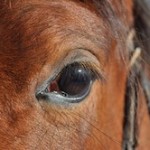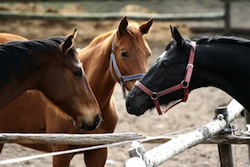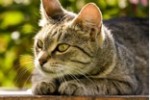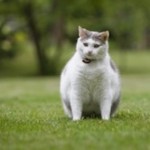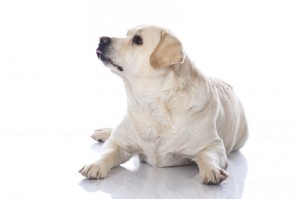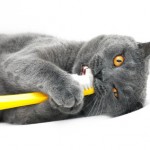
01 Dec2014
Written by Catherine JACQUES. Posted in News
TARTAR : think about it .
What is the scale ?
Dental plaque is a substance primarily made up of protein
Salivary, food (sugar and acid), of bacteria and their toxins. In normal times, Dental plaque is removed during a teeth brushing, but when this is not the case, It expands to form a "bunch".. Facing this, the saliva of the dog or the cat (as for humans) contains a high concentration of calcium that, over time, will facilitate the mineralization of dental plaque into Tartar.
The best way to combat the accumulation of dental plaque is to regularly brush your pet.
The problem is that, not only is it not clear him brushing teeth, but more, to prevent the formation of tartar, brushing should be perfect, that is to say make smooth teeth.
There are other methods to slow down the appearance of tartar. These methods are not as effective as brushing but are a much easier alternative.
When the scale is deposited, only one descaling to eliminate it.
What are the consequences of the scale for your pet ?
Some dogs may suffer from the appearance of tartar earlier than others especially small breeds which may have from 1 years. Therefore regularly examine your dog's teeth. Without treatment, Tartar and dental plaque settled under the gum. Unfold then several steps, in order of evolution :
The gingiva ignites and becomes painful. Your dog is then Gingivitis (inflammation of the gums), He has bad breath.
If it is still not cured, the infection progresses to the jawbone and the dental ligament that attaches the tooth to the bone. At this stage, We are talking about periodontitis : teeth loose, fall, abscesses form. Food intake becomes difficult.
Without care, These infections can spread, and if they are blood-borne, they can reach other sites : heart, OS, Prostate, kidney...
In conclusion, a non neat Tartar can lead over time to complications can be serious.
When should you worry about ?
The bad breath, at the outset.
Signs of pain are not always obvious to detect, but some signs should alert you : decrease of appetite (especially if he prefers to eat the foods soft type dough, compared with croquettes), salivation important, blood in saliva, withdrawal or aggressiveness When it touches her snout or that we want to raise him the chops.
What to do if your pet has Tartar ?
The best solution is to descale, to start on a sound basis.
It is an operation under general anesthesia, which does not hurt. It is made using ultrasound devices similar to those used by dentists.
Sometimes loosened teeth extraction is necessary.
Scaling is a treatment and not a preventive method. To delay the filing of future scale up, and so the next descaling, There are preventive methods.
Does focus on dry or wet food to prevent the formation of tartar ?
Dry : the mechanical action of chewing is essential in the prevention of dental plaque. With regard to the wet food, household or industrial, the animal will swallow almost without PuTTY, and will not be used almost no teeth.
The veterinary health food has a role in the prevention of tartar ?
Yes : the size of the kibble, their texture, and even the arrangement of fibers within the croquette are important factors.
They were taken into account by some brands of veterinary diet croquettes, who have designed foods to slow down considerably the scale formation.
Can I descale myself my pet by "scratching" with an instrument ?
Act so isn't a good idea. Indeed, a good portion of the scale is located between the gum and the tooth, in depth. It was he who amazed the tooth and will be responsible for his fall. Withdraw only the visible part of the scale returns to deal as of the Tip of the iceberg, the rest is inaccessible.
Does necessarily anesthetizing the animal to do descaling ?
Yes, for several reasons :
At the outset, used ultrasound equipment, as for humans. It would be likely to take the animal to perform the task, should keep it very strongly, and the stress generated by all this would be terrible for him.
Then, It is an act which to be well done, requires taking his time, to have an animal lying and still, and good access to internal and external of all teeth faces, molars included.
Finally, to remove tartar located below the gumline, You must drag the tip of the scaler sometimes deep enough along the roots, in pockets formed, and some too damaged teeth shall even be withdrawn otherwise these teeth will remain too painful for the animal.
What to do in prevention ?
As we have already said, the best way still brushing the teeth with toothpaste.
Still need to get to convince the animal... the best is to start in the young : used it first to the absorption of the toothpaste and then a simple massage of the gums with a finger, then the application of toothpaste on the teeth with the finger, and finally to the brush or the finger.
Brushing 3 twice a week, or even every day, is recommended.
Other oral hygiene products are now available, who can replace, or, best, complete brushing :
Toothpaste without brushing : the gel or paste are simply applied, and adhere some time on the teeth. They may contain enzyme complexes, antiseptics, mild abrasives and even a bio film on the tooth-forming polymers.
Dental solutions : splashes on the teeth or to mix with drinking water, they contain an antiseptic action anti-plaque. Use in addition to brushing.
Algae-based food supplement : presented in the form of powder to mix in the ration, is a marine alga recognized dental anti-plaque effect.
Slats and chew bars : they have both mechanical action (by the fact chew) and biological (they contain an antiseptic and/or an enzyme complex). They are very convenient to give.
What to choose as power supply ?
Encourage chewing can partially inhibit the adhesion of dental plaque (mechanical action and stimulate salivary fluid). The kibble the pet chews at length are theoretically preferable to mailboxes. Where the interest of dry food to dental objective, characterized by a large volume, the presence of fibers that "paint" the teeth and the low mineral content which is Tartar. The self-cleaning effect is the same as that obtained with bars or slats chewing.
YOUR QUESTIONS, OUR ANSWERS
Need to descale a dog or a cat over 10 years ?
With fixed and gas anaesthesia techniques current, adapted to the State of health of your pet, age is no longer a factor limiting. Of course, anesthesia is not an innocuous Act and zero risk does not exist, but the current equipment and protocols allow to fall asleep for very old animals, heart, insufficient kidney or liver with limited risks.
On the other hand, let his animal with a big dental infection, Discalced or painful teeth, and infected JAWS, is at least as dangerous and uncomfortable (for the animal, and the master) that reasoned anesthesia.
Descaling knocked teeth ?
Non. It's not scaling, but rather the absence of oral care, too late care or, who are responsible for the loosening of teeth, and so their loss. If the teeth fall during descaling, It's that they held only by Tartar.
How often should descale his pet ?
There is no frequency type. It depends on the State of the teeth and gums. Animals are not equal faced with Tartar, Some will require annual descaling (or biennial) while others will never need to be descaled.
My dog's teeth are yellow, What is the scale ?
Attention, not scale everything. Some staining of the enamel have nothing to do with the scale and will not leave with the descaling. Despite everything, white teeth which become progressively yellow then Brown, all accompanied by halitosis (bad breath) and gingivitis, are very often a sign of plaque and dental calculus.
Should we remove the milk teeth that have not fallen, and at what age ?
Generally, puppies and kittens are born without teeth. Teeth decidua (milk) will appear gradually, and the first dentition is complete 3-4 month. Then these teeth will be replaced by permanent teeth, larger and stronger.
If these milk teeth fall not only (common in small breeds of dog), It is necessary to remove them because they will prevent the adult teeth to push properly, and will generate more Tartar and infections later.
What is due the bad breath of my dog ?
Most often it is related to the multiplication of bacteria within the oral plate, itself a precursor of tartar. This is why antiseptic or antibiotic treatment may temporarily remove this odor. But without scaling or dental care, This bad breath will return very quickly, upon discontinuation of treatment.
Can I descale an animal during surgery ?
Yes, If it is a minimally invasive surgery and short-term.
However it is always inappropriate to descale an animal during heavier surgery, by risk of spread of germs within the said surgery, endangering the outcome of the intervention. It's the same if this extension too time.
What are the factors predisposing to the appearance of tartar in dogs ?
The main factors are the race (small breeds generally more susceptible), the age, food, the lack of maintenance (brushing, food supplements,…), but also more rarely mandibular fractures, gingivitis and anything that can limit the chewing.
Can an animal feed if we removed all of his teeth ?
Yes, and to feed even better that there be more evil in the mouth. Healing and recovery are generally very fast, and the animal eat often tomorrow.
It mostly eats wet food (or semi-dry, i.e. croquettes wetted), but some cats or dogs, totally edentulous, always eat cakes. They can then either swallowing, either chews moistening them with their saliva.
